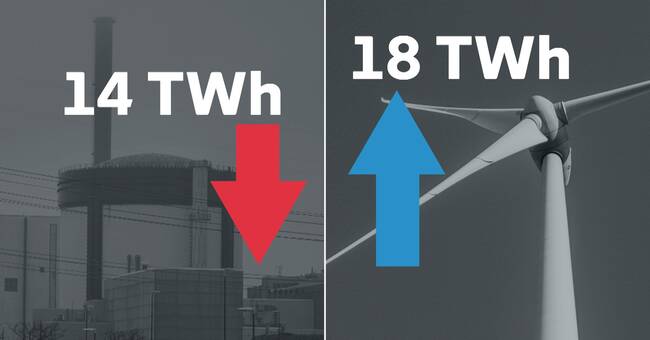It was a political decision that led Vattenfall in 2015 to decide to close two of Ringhals' reactors prematurely.
New safety requirements after the nuclear accident in Fukushima in 2011 and the power tax, which was later abolished, played a role in the decision, says Vattenfall's production manager Torbjön Wahlborg.
At the turn of the year, Ringhals 1 and 2 were closed. But during the recent winter cold, nuclear power had been needed, says Torbjön Wahlborg.
Today there is talk of a shortage of electricity, was it wrong to shut down the reactors?
- In January and February it would have been good.
But neither last year nor this I think it would pay off with one or two more reactors.
In retrospect, it was the right decision we made, he says.
Other energy sources
One effect of the reactor closure has been that it has become more profitable to invest in other energy sources.
Ringhals' two closed reactors result in a loss of electricity production of 14 terrawatt hours per year.
But until 2022, 18 terrawatt hours will be added, in the form of new wind power.
The surplus means that Sweden will be able to sell more green electricity.
But some problems have arisen.
One is that the new wind power is often in the north and the closed nuclear power is in the south.
Today, there are not enough new power lines that Sweden really already needs.
No power shortage
Torbjön Wahlborg believes that the electricity situation is strained and more uncertain today, in a way that it might not have been if we had had more nuclear power.
But he does not think that Sweden has a real electricity shortage.
The reserve power plant in Karlshamn has been started three times this year, which happened in previously cold winters, but only at "idle".
It has been in reserve power in readiness and the system has never been up to the maximum level.
Vattenfall and state-owned Svenska kraftnät both believe that electricity prices will fall slightly.
This basically means cheaper electricity and increased profitability for industries that need a lot of electricity.
But prices will fluctuate more.
Wind power is more unpredictable and provides more days with expensive electricity.
- We will manage, but it gives greater price variation, which the industry must relate to, he says to SVT.

